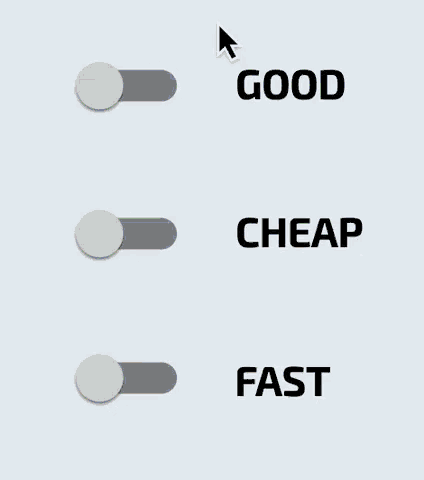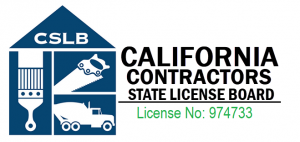Why Choose RotoTillerGuy

Ask my so called “Competition” these three questions
![]() Do the other guys Pick Axe by hand with a Pick Axe, 6 – 8 inches deep, before they use the RotoTiller machine ?.
Do the other guys Pick Axe by hand with a Pick Axe, 6 – 8 inches deep, before they use the RotoTiller machine ?.
If they don’t Pick Axe first there is no way the RotoTiller machine CAN / WILL RotoTill as deep as it’s supposed to.
![]() How deep, will they put in writing, Will the RotoTiller machine go ? If it’s not in writing in their bid/estimate how can you hold their feet to the fire ?
How deep, will they put in writing, Will the RotoTiller machine go ? If it’s not in writing in their bid/estimate how can you hold their feet to the fire ?
Our written Bid / Estimate says we RotoTill 6 – 8 inches deep
![]() What, if anything at all, will the other guys be mixing into your soil ? What are they going to “Amend” your soil with ? And how much ?
What, if anything at all, will the other guys be mixing into your soil ? What are they going to “Amend” your soil with ? And how much ?
Our bid says in writing that we bring and spread a 3 inch layer of Compost, and then RotoTill again to mix that 3 inches all through out your 6 – 8 inches of Top Soil. Our bid calculates and shows you the math regarding how we determine how much Compost that we are bringing and mixing deeply into your soil to amend and restore and rejuvenate your soil with.
![]() Because of our transparent, upfront, straight forward, out in the open business model and allowing the potential customer to create their own bid/estimate online on our website and select each option and build your own to suit your budget bid/estimate vs. the other guy’s throwing out some mysterious unjustified number without any back up or explanation of what you should expect in exchange for your money.
Because of our transparent, upfront, straight forward, out in the open business model and allowing the potential customer to create their own bid/estimate online on our website and select each option and build your own to suit your budget bid/estimate vs. the other guy’s throwing out some mysterious unjustified number without any back up or explanation of what you should expect in exchange for your money.
![]() Because we don’t have to drive around to create bids, we are able to focus on the job sites that we are currently working on and finish what we are doing before being interrupted by another project. We can get more jobs started and finished each week, We end up being more profitable each week, And We can afford to purposefully charge, on average, 20% less than our so-called “Competition.”
Because we don’t have to drive around to create bids, we are able to focus on the job sites that we are currently working on and finish what we are doing before being interrupted by another project. We can get more jobs started and finished each week, We end up being more profitable each week, And We can afford to purposefully charge, on average, 20% less than our so-called “Competition.”
Once you hire RotoTillerGuy, we aren’t distracted and leaving to give someone else a bid. We are committed and Focused on starting and finishing your project, and then the next, and the next.

Ask these questions before hiring someone to install your Irrigation / Sprinkler System:
- What should the PSI of water be that enters into a person’s house ?, and Why ?
- How does the PSI get reduced if it is greater than it should be ?
- What should the PSI of water be for the Sprinkler System ?
- What diameter size pipe do we need for the Irrigation Valves ?
- What happens when we only have ½ inch water supply to the Irrigation Valves ?
- What is the PSI maximum rating for Schedule 20 PVC ?
- What is the PSI maximum rating for Schedule 40 PVC ?
- What is the PSI maximum rating for Schedule 80 PVC ?
- What is the PSI maximum rating for Copper Pipe ?
- Which types of pipe are UV rated ?
- Schedule 20 PVC
- Schedule 40 PVC
- Schedule 80 PVC
- Copper Pipe
- When you see Galvanized Steel Pipe supplying water, how old do you instantly assume that plumbing to be ? If there is damage and leaking water to Galvanized Steel plumbing what do you suggest as common practice to the customers ?
- What happens if Copper is connected directly to Galvanized Steel pipe ? What is a Dielectric reaction ? How can one transition from a Galvanized Steel plumbing to Copper plumbing ?
- When you see Irrigation pipes made of Schedule 20 PVC what do you immediately think ?
- Would you EVER use Schedule 20 PVC for any reason in Irrigation ?
- Is Schedule 40 PVC up to Code to be used as the main water supply to a House (from the City Water Meter to the House)? To be used as the water supply to Irrigation Valves (especially if it’s exposed to sun light) ?
- How deep should the Main Water Supply be Trenched in the soil and Buried ? What does “Code” say ?
- How deep should the Schedule 40 PVC pipes be Trenched and Buried in the soil for the Irrigation System ?
- What are the Pro’s and Con’s of Brass Irrigation Valves vs. Plastic Irrigation Valves ?
- Brass Pro’s Con’s Plastic Pro’s Con’s
- Greater PSI Higher Cost Lower Cost UV
- Parts Availability/ReBuildability Weather durability
- Weather Durability Parts Availability/ReBuildability
- If we have ¾ inch water supply to the Irrigation Valves and we have between 60 – 80 PSI (providing X? GPM) how many normal 8 foot radius Pop Up Sprinklers should we be able supply enough Volume and Pressure to on each Zone so that they Pop Up and Spray and operate properly to give complete coverage ?
- What does the Sod Farm require for Soil Prep before installing the Sod in order to qualify for a guarantee ?
- How many Gear Driven sprinkler heads can we operate ?
- What is the definition of complete (overlapping) coverage ?
- What is Water Hammer ? What causes it ? What Arrests it ?
- How can you diagnose if the Timer is not working and not sending the 24 volts ? Vs the Sprinkler Wire is broken or has a loose connection ? Vs the Solenoid is bad ? Vs the Water Supply is shut off ? Vs the Actuator Volume Control has been adjusted closed ? Vs the Actuator Diaphragm is not opening like it should ?
If a customer wants an area to become a sitting area of Decomposed Granite, 4” thick. The area is 15’ 9” wide by 18’ 3” long.
- How many square feet is the area ?
Answer:
15’ 9” = 15.75
18’ 3” = 18.25
15.75 * 18.25 = 287.4375 Square Feet or Area
- How much Soil needs to be removed ? Cubic Feet ? And Cubic Yards ?
Answer:If you want to put DG in, you first need to make room and remove a 4” layer of Soil. Unless you are just going to Pile the 4” layer of DG up on top of the soil, creating a 4” step up ?
A Cubic Foot is basically 12 inches LONG by 12 inches WIDE by 12 inches TALL. Within that Cube 4 inches TALL goes into 12 inches TALL 3 times. One Cubic Foot can cover 3 Square feet with a 4 inch layer. So 287.4375 / 3 = 95.8125 Cubic Feet. You need to remove and dispose of 95.8125 Cubic Feet of Soil. 95.8124 Cubic Feet / 27 = 3.54861111 Cubic Yards. A yard is basically 3 feet long * 3 feet wide * 3 feet tall, 3 * 3 * 3 = 27. A Cubic Yard of Soil roughly weighs one ton (2,000 lbs). So 3.548611 tons, 7,097.22 lbs. think Labor and Time and expense.
- How much DG needs to be purchased and brought in ? Cubic Feet ? And Cubic Yards ?
Answer: Same amount, same volume needs to be purchased, delivered, moved into place.
- What is the difference between “Stabilized” DG vs. just DG ?
Answer: Stabilized DG will congeal and solidify into a pad. UnStabilized DG is a sand pit that turns into a Cat Box for the neighborhood cats, and gets kicked around and eventually lost as people walk in and out of the area.


